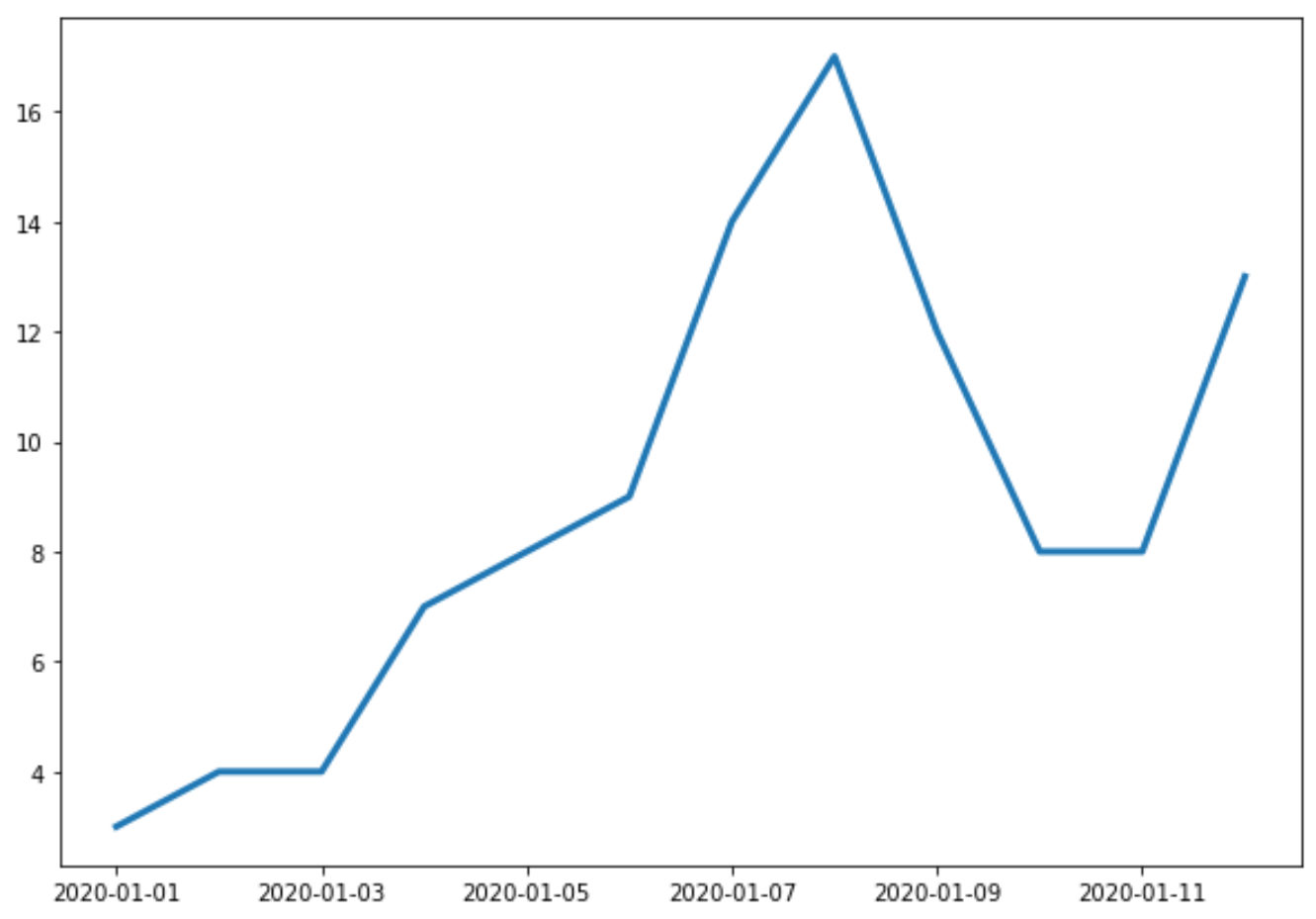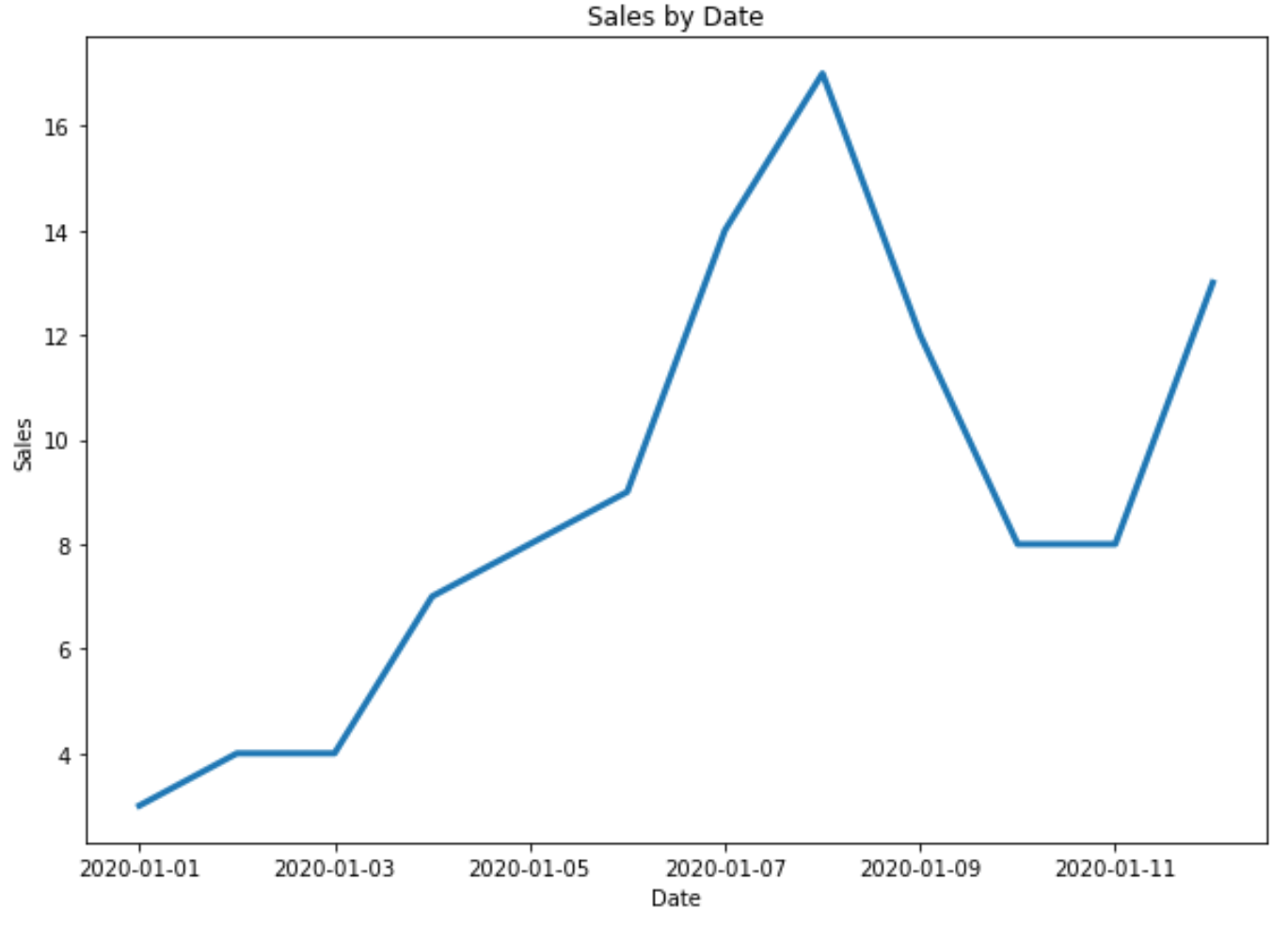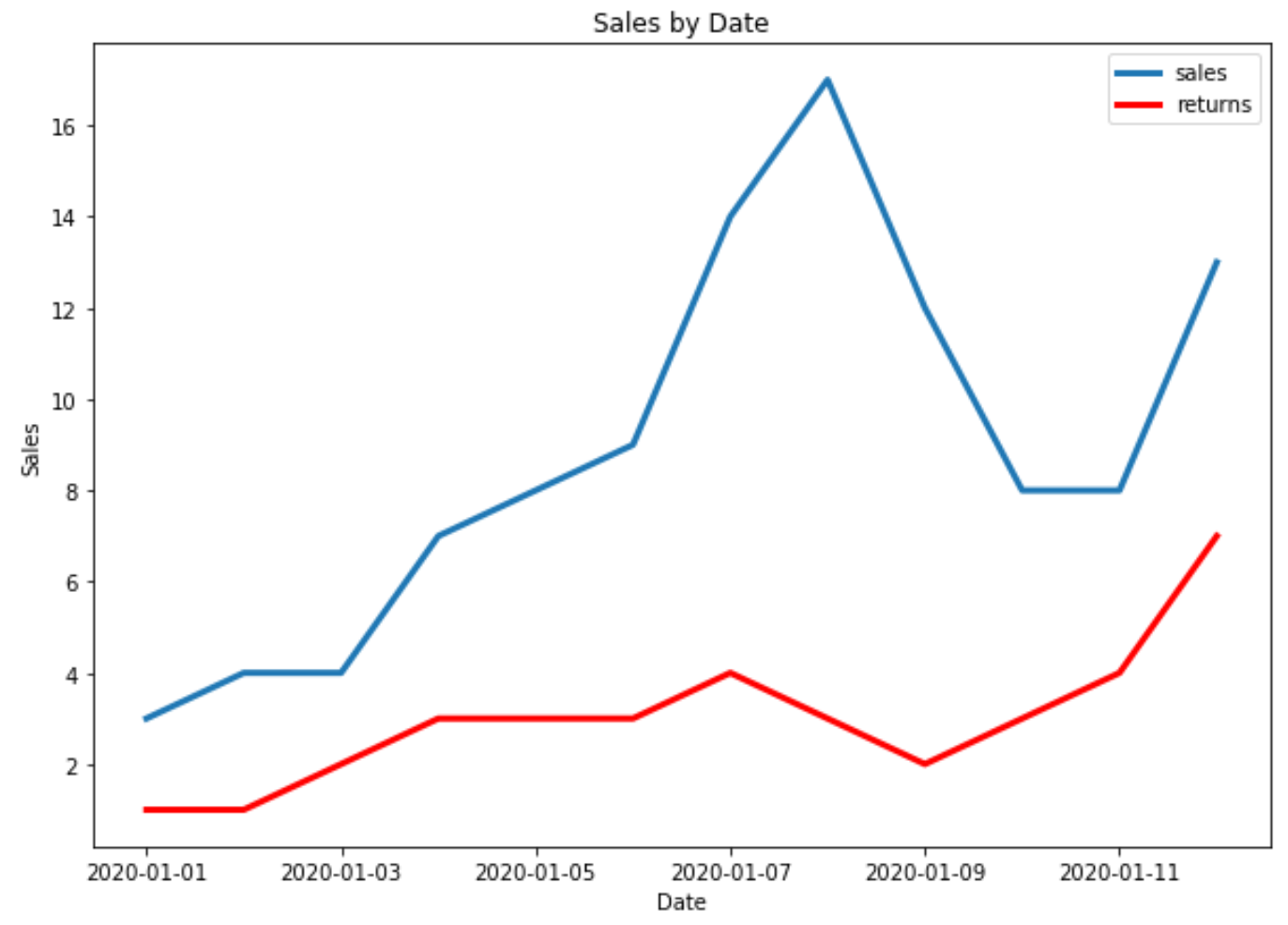Matplotlib'de zaman serisi nasıl çizilir (örneklerle)
Matplotlib’de bir zaman serisi çizmek için aşağıdaki sözdizimini kullanabilirsiniz:
import matplotlib. pyplot as plt plt. plot (df. x , df. y )
Bu, x değişkeninin datetime.datetime() sınıfına ait olduğunu varsayar.
Aşağıdaki örnekler Python’da zaman serisi verilerini çizmek için bu sözdiziminin nasıl kullanılacağını gösterir.
Örnek 1: Matplotlib’de temel bir zaman serisinin grafiğini çizme
Aşağıdaki kod, bir işletmenin ardışık 12 gün boyunca yaptığı toplam satışları gösteren Matplotlib’de bir zaman serisinin nasıl çizileceğini gösterir:
import matplotlib. pyplot as plt import datetime import numpy as np import pandas as pd #define data df = pd. DataFrame ({' date ': np. array ([datetime. datetime (2020, 1, i+1) for i in range(12)]), ' sales ': [3, 4, 4, 7, 8, 9, 14, 17, 12, 8, 8, 13]}) #plot time series plt. plot (df. date , df. sales , linewidth= 3 )

X ekseni tarihi, Y ekseni ise her tarihteki toplam satışları gösterir.
Örnek 2: Başlık ve eksen etiketlerini özelleştirme
Grafiğe başlık ve eksen etiketleri eklemek için aşağıdaki kodu kullanabilirsiniz:
import matplotlib. pyplot as plt import datetime import numpy as np import pandas as pd #define data df = pd. DataFrame ({' date ': np. array ([datetime. datetime (2020, 1, i+1) for i in range(12)]), ' sales ': [3, 4, 4, 7, 8, 9, 14, 17, 12, 8, 8, 13]}) #plot time series plt. plot (df. date , df. sales , linewidth= 3 ) #add title and axis labels plt. title (' Sales by Date ') plt. xlabel (' Date ') plt. ylabel (' Sales ')

Örnek 3: Matplotlib’de birden fazla zaman serisinin grafiğini çizme
Aşağıdaki kod, Matplotlib’de birden fazla zaman serisinin tek bir grafikte nasıl çizileceğini gösterir:
import matplotlib. pyplot as plt
import datetime
import numpy as np
import pandas as pd
#define data
df = pd. DataFrame ({' date ': np. array ([datetime. datetime (2020, 1, i+1)
for i in range(12)]),
' sales ': [3, 4, 4, 7, 8, 9, 14, 17, 12, 8, 8, 13]})
df2 = pd. DataFrame ({' date ': np. array ([datetime. datetime (2020, 1, i+1)
for i in range(12)]),
' returns ': [1, 1, 2, 3, 3, 3, 4, 3, 2, 3, 4, 7]})
#plot both time series
plt. plot ( df.date , df.sales , label=' sales ', linewidth= 3 )
plt. plot ( df2.date , df2.returns , color=' red ', label=' returns ', linewidth= 3 )
#add title and axis labels
plt. title (' Sales by Date ')
plt. xlabel (' Date ')
plt. ylabel (' Sales ')
#add legend
plt. legend ()
#displayplot
plt. show ()

Ek kaynaklar
Matplotlib: Gruba göre kutu grafikleri nasıl oluşturulur?
Matplotlib: Yığılmış Çubuk Grafikler Nasıl Oluşturulur